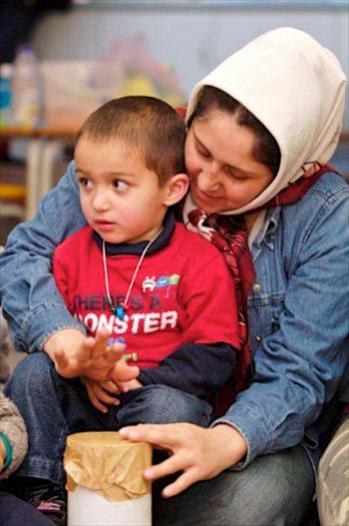What sound is that?
Duration/age

Did you hear that? What was that? Was it a bird?
Every day your child will hear different sounds and noises around them. Sometimes they will know the sound and be able to tell you what it is. They might tell you where the noise or sound is coming from.
I can hear music outside. That’s the music from the ice-cream van.
Other times your child might hear a noise that surprises them and not be able to name what it is.
That was a very loud noise. I think it was the truck collecting the rubbish bins.
Talk to your child about the different sounds you hear as you move around the house or are out and about. When you hear something ask your child if they heard it too. Sometimes you might have to tell them what made the sound.
Did you hear that? That was the dog next door barking.
You could go on a sound hunt and try to hear, name and record as many different sounds as possible. Will there be more sounds inside or outside?
Materials you will need
- Your ears
Alternative tools
- Tablet / smart phone
- Mobile phone
- Device to record sound
Skills this activity improves
Why does this matter?
Listening to, identifying and responding to sounds in the environment helps children to develop listening skills and language.
When children are able to hear different sounds and identify where the sound is coming from they are developing the skills to respond to language and understand what the other person is trying to say. When your child can hear different tones, sounds or pitch in speech they will be able to identify how the other person is feeling and how important the message is.
'Mummy’s voice was very loud. She was very cross.'
Being able to hear and know the direction of the sound helps children to move safely around their environment.
'We have to stop and listen before we cross the road. Can you hear a car coming?'
What does this lead to?
When children are able to hear and discriminate between sounds and patterns within speech they are developing an understanding that each letter has its own sound.
As they listen carefully they will hear and begin to identify that there are sounds at the beginning, middle and end of words. Once they can identify individual sounds they will begin to identify where else they can hear the same sound.
'My name starts with a B. Bat and book also start with a B.'
Being able to identify sounds within words and individual sounds helps a child learn to spell words, read and write.
Language to use
- Near, far, close
- Loud, soft, quiet, slow, muffled, clear
- Sound, noise, singing, talking, whistling, laughing
- Car noise, animal noise, appliances, environmental noise, birds
Questions to use
- Do all animals sound the same?
- Are inside noises different to outside noises?
- What noise does the washing machine make when it is finished?
- How do you know that the microwave has finished?
Useful tips
- Information about hearing, sound and language development can be found in your child's health record in the Blue Book.
- For more information about developing language and literacy skills see the activities Reading together and Singing with your baby.
- If you are concerned about your child's hearing talk to your local doctor.
- Remember to talk to your child in your home language.
More ideas
- Make your own music shakers. Can you make two that sound the same?
- Borrow sound lotto games from your local library.
- Borrow books with audio sections from your local library.
Variation by age
Birth to two year olds
- Sing songs together that contain rhymes and repeated sounds.
- Play sound games together.
- Change your voice to sound like different characters as you read a story together.
- Put out musical instruments to play.
Three to five year olds
- Sing songs together that contain rhymes and repeated sounds.
- Play sound games together.
- Change your voice to sound like different characters as you read a story together.
- Put out musical instruments to play.
- As you read together identify sounds that are the same.
- Go on a sound hunt, recording the sounds around the house.
- Make a different ringtone for each member of the family. Can your child tell who is ringing?
Questions to ask
- Which is the soft sound? Which is the loud sound?
- Who makes that sound?
- Where is that sound coming from?
- What sound does a dog make?
Questions to ask
- Which is the soft sound? Which is the loud sound?
- Who makes that sound?
- Where is that sound coming from?
- What sound does a dog make?
- Can you find another sound the same?
- Can you find another word that sounds like cat?
Language to use
- Loud, soft
- Quick, long, short
- Rhyme, rhythm, tone, pitch
- Bark, meow, cluck, quack
Language to use
- Loud, soft
- Quick, long, short
- Rhyme, rhythm, tone, pitch
- Bark, meow, cluck, quack
- Same, different, similar


